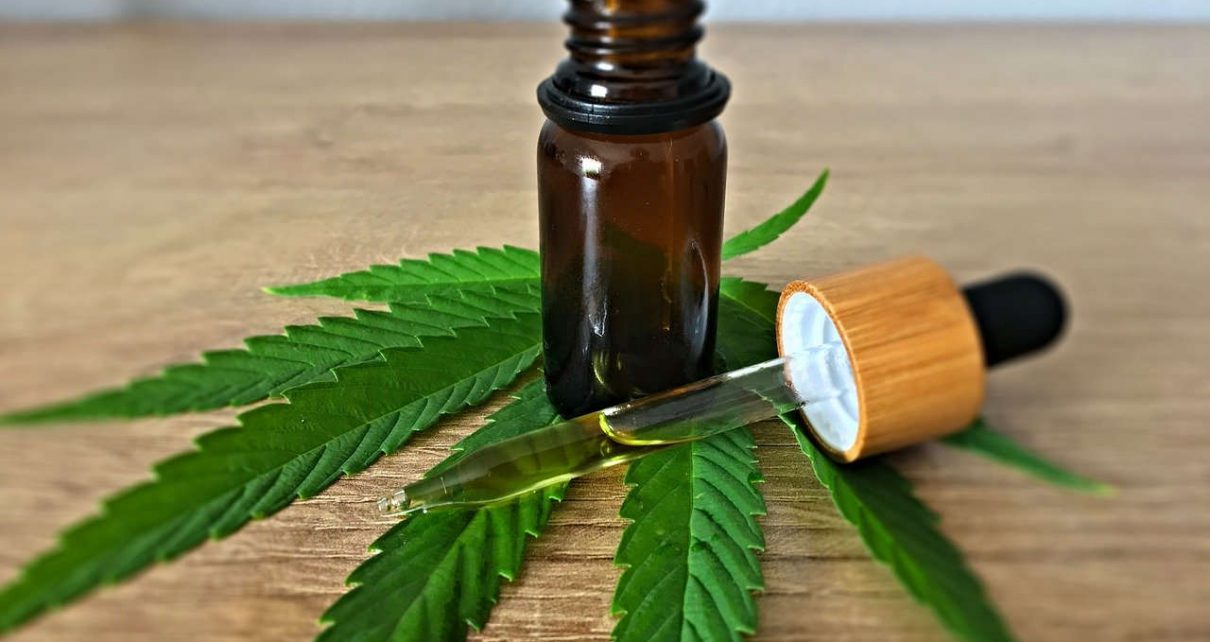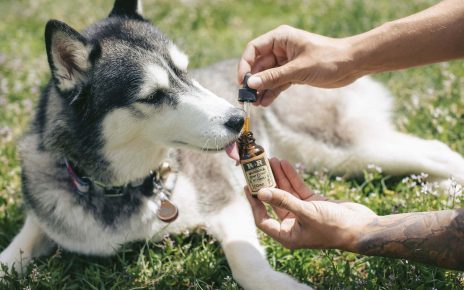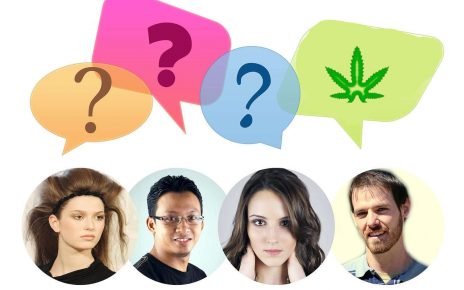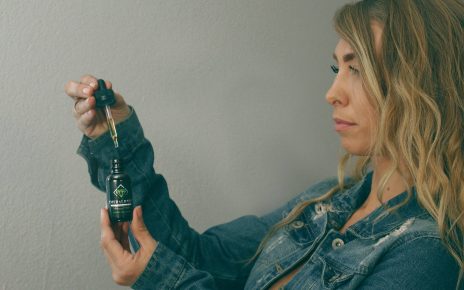Cannabidiol (CBD) is a well-known cannabinoid from the hemp plant, CBD is increasingly becoming the focus of research because of its anti-inflammatory, anticonvulsant, anxiolytic and antipsychotic effects.
Cannabidiol (CBD) is one of over 100 cannabinoids found in cannabis plants and can reduce anxiety or anxiety.
CBD makes up to 40% of the plant extract.
This non-psychoactive phytocannabinoid was discovered in 1963 by Raphael Mechoulam, a professor at the Hebrew University of Jerusalem, Israel.
Anxiety is a world wide illness
Anxiety is the most common of all mental disorders—currently affect about one in 13 people (7.3 percent).
Anxiety disorder is the second most common mental illness after depression.
The pharmaceutical industry has developed numerous medicines for anxiety treatment in recent years. These promise relief, but are not free of side effects.
What is Anxiety?
Fear is an important instinct and a natural reaction that is essential for our survival.
Feelings of fear protect us in life, for example, when we want to cross the street. Our instinct senses a possible danger and we instinctively look to the left and right before crossing the street.
Fear is a sensible feeling which helps us to avoid dangers.
However, in an anxiety disorder, the fear reaction can also occur in non-dangerous situations, such as at the cash register in a supermarket, and is inappropriately exaggerated.
The fear then develops its own dynamic and the fear-stress reaction system is misdirected.
Anxiety disorder
Today’s diagnostics differentiate between different clinical forms of anxiety:
Panic disorder (panic syndrome)
Those affected suffer from panic attacks (anxiety attacks) that occur again and again without any real danger.
The physical fear reaction seems to come out of the blue, which is experienced as a health threat.
The symptoms show up on a physical level in the form of rapid heartbeat, chest tightness, shortness of breath, sweating, feelings of heat, cold shivers, tremors, tingling or numbness as well as nausea.
The psychological symptoms are the fear of going crazy, losing control or dying.
Generalized Anxiety Disorder
People experience persistent, generalized anxiety that is not limited to specific environmental conditions.
Affected people suffer from unfounded concerns/fears, the fear of illnesses or future misfortunes.
The anxiety symptoms show up in concentration disorders, nervousness, hot flashes, constant tension, drowsiness, tension headaches, muscle tension, pain and sleep disorders.
Agoraphobia (claustrophobia) and claustrophobia (fear of confined spaces)
Unlike panic disorder and generalized anxiety disorder, the symptoms of which usually occur for no apparent reason, claustrophobia and claustrophobia are triggered by certain locations or situations such as crowds of people or confined spaces.
In extreme cases, people are no longer able to leave their homes.
Social phobia (social anxiety disorder)
People with social anxiety do not take part in social gatherings for various reasons.
They fear rejection that they may not meet other people’s expectations or other problems.
This is accompanied by the fear that others might see their fear or nervousness.
Here, too, the fears are accompanied by various physical symptoms such as feelings of oppression or dizziness, nausea, gagging, a headache and stomach pain and diarrhea.
How does fear arise?
Anxiety disorders arise in the body according to the following pattern:
- Our senses initially perceive something. So we may see, feel, hear, smell or taste something.
- This perception gets into our brain, and the cerebral cortex interprets it based on our past experiences – in the case of fear as life-threatening.
- This message then enters the so-called limbic system, which consists of the amygdala (almond kernel) and the hippocampus.
- The hypothalamus then releases the anxiety symptoms by signaling the adrenal medulla to release adrenaline, noradrenaline, cortisone, and cortisol.
- As a result, the sympathetic and parasympathetic nervous systems are activated.
This process evolves within milliseconds, and sometimes this reaction occurs without an interpretation of perception. This happens, for example, when we suddenly startle.
Symptoms of anxiety disorder
The sympathetic nervous system, which causes the following symptoms, is responsible for the physical reactions or the panic feeling:
- Heartbeat increases and as a result the coronary arteries expand and blood pressure increases. The blood vessels of the internal organs and skin narrow.
- Skeletal muscles contract due to the increased blood flow. To prepare the body to flee or fight.
- Blood thickens, which happens in preparation for possible injuries.
- The bronchi expand, which makes us breathe faster. A better oxygen supply.
- Metabolism is accelerated so that we get more energy.
- An urge to urinate and stool are stopped and we feel no appetite or hunger. In addition, blood lipid levels (cholesterol) and blood sugar levels rise.
- Genital organs are supplied with less blood because the sex drive is neither useful for flight nor for an attack.
- Our pupils dilate so that we can see better.
- Cold sweat and body temperature rises.
- We feel restless, excited and nervous. But we are wide awake and concentrate on the “danger”.
The parasympathetic nervous system ensures that our body has returned to normal.
Causes of anxiety disorders
There are different theories about the development of anxiety disorders.
Psychological and neurobiological factors play an important role here, and genetic factors also seem to be important.
Long-term stressful phases, depression, traumatic experiences, physical or emotional violence are possible triggers.
Researchers assume that the balance of messenger substances (neurotransmitters), such as noradrenaline, serotonin or gamma-aminobutyric acid (GAB), is disturbed.
However, the causes are still not fully understood.
Anxiety Disorder Treatments
For mild fears and panic attacks, relaxation procedures and stress relief usually help.
However, if the mental illness is so stressful that those affected can no longer cope with their life, everyday life and problems and suffer extremely, behavioral therapy can be a useful aid.
This has proven to be particularly effective for anxiety disorders and panic attacks.
Medicines can be used as a support, especially if depression occurs in addition to the anxiety disorder.
Medications usually can only provide a brief improvement in anxiety symptoms as long as the respective anxiolytic drug is taken.
There is no “cure” for anxiety disorder. Even behavioral therapy cannot be replaced by taking medication. Another problem is that drugs can jeopardize the success of behavioral therapy.
Our brain can only remember what we have learned in behavioral therapy depending on the state.
After stopping the medication, the progress made, for example, due to a stimulus confrontation, can disappear because the patient cannot transfer what he has learn into the drug-free state.
It is a controversial debate as to whether and if so, which anxiety medication should be prescribed.
While one side claims that drugs such as antidepressants improve anxiety, the other side claims that these drugs are unsatisfactory and have dangerous side effects.
For example, in 2013, the German Medical Journal reported that selective serotonin reuptake inhibitors (SSRIs) can have a positive effect and are generally well tolerated.
On the other hand, there are reports that anxiety medication only works in 54 out of 100 patients.
How does Cannabis affects the body?
The THC effects on the body have been well researched and it has been shown that THC activates the cannabinoid receptors in the body.
The cannabinoid receptors CB1 and CB2 are particularly well-known.
If the cannabinoid receptors are activated by the THC, a known psychological effect, as well as the therapeutically usable effects, develop.
THC thus influences the body’s endocannabinoid system.
How does CBD affects the body?
The mechanisms of action of CBD, the non-psychoactive cannabinoid, are much more diverse and far from all have been researched.
It is known that the phytocannabinoid cannabidiol can affect the following receptors:
CB1 receptor
It was discovered decades ago that the CB1 receptor is blocked by the phytocannabinoid and inhibits the THC effects such as appetite stimulation, increased heart rate and the psychoactive effect.
CBD also inhibits the absorption and breakdown of the body’s endocannabinoid anandamide.
Since anandamide activates the CB1 and CB2 receptor, the additional administration of CBD could increase anandamide activation.
This seems to be of particular interest with regard to patients with schizophrenia, since they have been shown to have an increased anandamide level in the brain (nerve water).
Vanilloid receptors and glycine receptors
CBD also stimulates the vanilloid receptors 1 and 2. The type 1 vanilloid receptors are mainly located on nerve endings that serve as pain receptors.
By activating both receptors, CBD hase an analgesic effect.
Researchers also believe that CBD activates the glycine receptors, which can suppress chronic pain stimuli.
In addition, CBD enhances signaling through adenosine, which blocks the release of activating neurotransmitters such as dopamine, norepinephrine or acetylcholine.
As a result, the blood vessels dilate and blood pressure drops. The anti-inflammatory property of CBD could also be based on this mechanism of action.
5-HT1A receptor
The 5-HT1A receptor is located in the brain and spinal cord and is responsible for various effects (learning processes, body temperature regulation, etc.).
Medicine is already making use of this effect. For example, the selective serotonin reuptake inhibitors (SSRIs) bind to the 5-HT1A receptor.
Since CBD also binds to this receptor, this could help alleviate anxiety.
Studies show cannabidiol’s anti-anxiety effects
For a long time, studies only dealt with THC from the hemp plant and neglected CBD the non-psychoactive phytocannabinoid.
It is now assumed that cannabidiol has a broad spectrum of activity as a drug.
Animal and human studies in Brazil already showed in 2011 that CBD has anxiolytic (anxiolytic) effects.
As part of this study, a group of patients with generalized anxiety disorder received 400 milligrams of CBD in the first session, and the second group received a placebo. In the second session, the placebo group received the CBD and the CBD group a placebo. As a result, it is said that the phytocannabinoid was able to reduce patient anxiety and is believed to work in the limbic and paralimbic areas of the brain.
In the same year, further studies were also carried out at the Brazilian university in Sao Paulo. Under the direction of Mateus M. Bergamaschi, it was found that CBD could help speakers in public or in front of the audience to alleviate their fears with just one CBD intake.
Other interesting studies
In 2014, the Daily Mail reported a cannabis study at Vanderbilt University. Here it is said that the cannabinoid receptors in the body are involved in the “fight or flight response.” In a mouse model, cannabinoid receptors in the central core of the amygdala, part of the limbic system in the brain, were identified for the first time. The researchers explain that this discovery can help understand why consumers say they use cannabis to reduce anxiety.
It is also interesting that researchers were able to show how the nerve cells in this area of the brain produce and release their own natural endocannabinoids.
Accordingly, the researchers believe that the body’s endocannabinoid system can regulate anxiety as well as the response to stress by damping special signals that contain the neurotransmitter glutamate.
The cannabinoids supplied by cannabis also dock with the cannabinoid receptors, which could explain the anxiolytic effect.
In a recent Spanish study, the researchers found from animal models that the activation of the 5-HT1A receptor by the CBD enhanced serotonin and glutamate signaling.
As a result, it is said that CBD products could be a novel antidepressant that works faster than SSRIs.
Can CBD oil help against anxiety?
CBD oil can be an alternative to the classic medication for anxiety.
CBD oil is obtained by distillation, which dissolves the cannabis ingredients.
CBD oil contains less than 2% of THC and therefore can be legally bought in a shop or on online shops for CBD products.
The contents of the CBD oil label should be fully described. Likewise, the amount per ingredient (e.g. alkane nitrogenizing compounds, terpenes, amino acids, flavonoids, sugar, vitamins, etc.) and the production method with alcohol or olive oil should be specified for CBD oil.
The same applies to the instructions for taking and the maximum dose. The exact CBD concentration should also be given.
In addition, it is advisable to pay attention to the dosage recommendations of the manufacturer and, if necessary, to start with a drop of CBD oil so that the effect is tested first.
CBD oil is considered a safe substance and has few side effects such as low blood pressure, drowsiness or dry mouth. However, these usually only occur after an overdose of the CBD oil.
CBD oil has great therapeutic potential for the treatment of anxiety disorders.
Most investigations and studies are still based on animal experiments. But the fact is that CBD has the potential to play an important role in the treatment of anxiety disorders .
Further research is still needed, especially extensive randomized control trials to investigate the long-term effects and potential of the CBD.
With proven efficacy and a very favorable side effect profile, especially in comparison to the currently available tablets against anxiety, CBD could be an alternative or supplement to the currently available psychotropic drugs.



